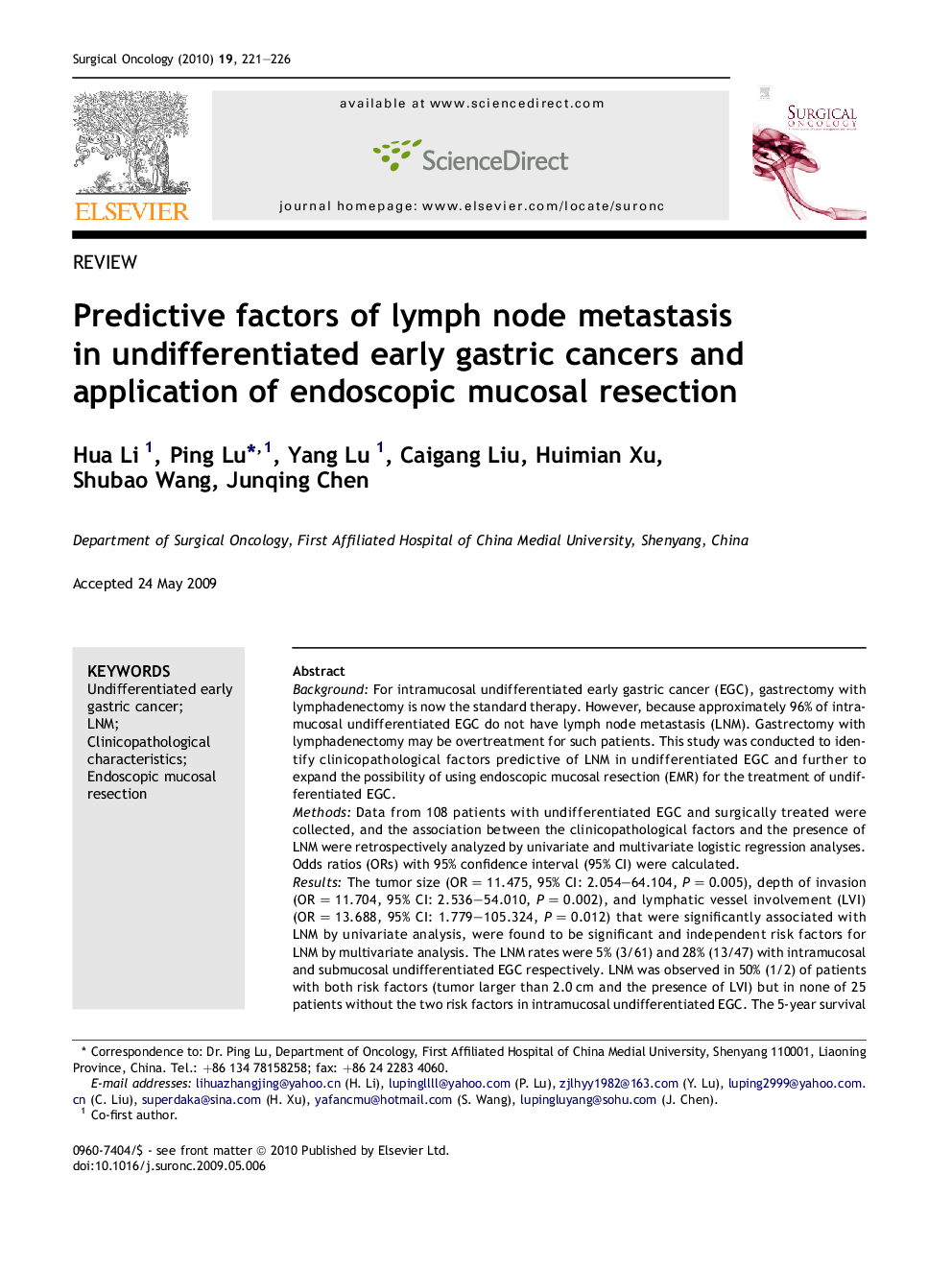| کد مقاله | کد نشریه | سال انتشار | مقاله انگلیسی | نسخه تمام متن |
|---|---|---|---|---|
| 3998001 | 1259187 | 2010 | 6 صفحه PDF | دانلود رایگان |

BackgroundFor intramucosal undifferentiated early gastric cancer (EGC), gastrectomy with lymphadenectomy is now the standard therapy. However, because approximately 96% of intramucosal undifferentiated EGC do not have lymph node metastasis (LNM). Gastrectomy with lymphadenectomy may be overtreatment for such patients. This study was conducted to identify clinicopathological factors predictive of LNM in undifferentiated EGC and further to expand the possibility of using endoscopic mucosal resection (EMR) for the treatment of undifferentiated EGC.MethodsData from 108 patients with undifferentiated EGC and surgically treated were collected, and the association between the clinicopathological factors and the presence of LNM were retrospectively analyzed by univariate and multivariate logistic regression analyses. Odds ratios (ORs) with 95% confidence interval (95% CI) were calculated.ResultsThe tumor size (OR = 11.475, 95% CI: 2.054–64.104, P = 0.005), depth of invasion (OR = 11.704, 95% CI: 2.536–54.010, P = 0.002), and lymphatic vessel involvement (LVI) (OR = 13.688, 95% CI: 1.779–105.324, P = 0.012) that were significantly associated with LNM by univariate analysis, were found to be significant and independent risk factors for LNM by multivariate analysis. The LNM rates were 5% (3/61) and 28% (13/47) with intramucosal and submucosal undifferentiated EGC respectively. LNM was observed in 50% (1/2) of patients with both risk factors (tumor larger than 2.0 cm and the presence of LVI) but in none of 25 patients without the two risk factors in intramucosal undifferentiated EGC. The 5-year survival rates were 88%, 82% and 50%, respectively in cases with none, one and two of the risk factors respectively in intramucosal undifferentiated EGC (P < 0.05).ConclusionsA tumor larger than 2.0 cm, submucosal invasion, and the presence of LVI are independently associated with the presence of LNM in undifferentiated EGC. EMR alone may be sufficient treatment for intramucosal undifferentiated EGC if the tumor is less than or equal to 2 cm in size, and when LVI is absent upon postoperative histological examination. When specimens show with LVI, unexpected submucosal invasion, and unexpectedly larger tumor size than that determined at pre-EMR endoscopic diagnosis, an additional radical gastrectomy is probably better for these patients.
Journal: Surgical Oncology - Volume 19, Issue 4, December 2010, Pages 221–226